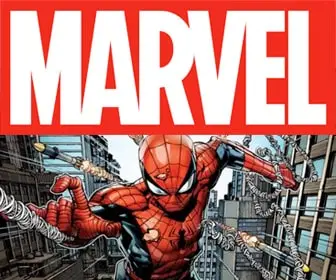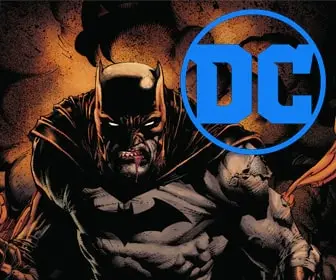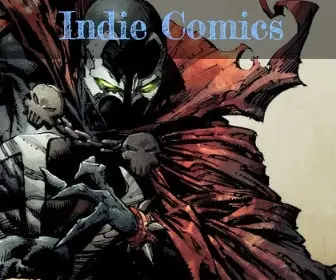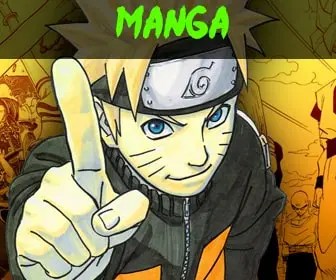
From Sketch to Print: Self-Publishing 101
Self-publishing has become a popular path for many writers, including graphic novelists. In the past, getting a novel published meant passing through many gates. Publishers were gatekeepers who decided what readers got to see. Now, with self-publishing, anyone can share their story with the world. This change is significant for graphic novelists.
Firstly, self-publishing gives artists full control over their work. They get to make all the decisions, from the story to the artwork. This freedom lets them stay true to their vision.
Moreover, self-publishing allows for more stories to be told. Graphic novelists from all walks of life can now share their unique perspectives. This diversity enriches the world of graphic novels.
The rise of self-publishing has opened many doors. It’s a chance for graphic novelists to show their creativity and connect with readers directly. This change has made the graphic novel scene more vibrant and diverse.

Crafting Your Story
A compelling narrative and well-developed characters are crucial for the success of any graphic novel. Firstly, the story is the heart of your graphic novel. It’s what captures the reader’s interest and keeps them engaged. A strong, well-structured narrative makes your graphic novel memorable and exciting. It takes the reader on a journey, filled with twists and turns, highs and lows. This journey is what makes the reader invested in the story and eager to see what happens next.
Secondly, well-developed characters bring your story to life. They are the ones readers connect with and care about. When characters are relatable and have depth, readers feel more involved in their struggles and triumphs. Each character should have their own personality, background, and motives. This makes them feel real and believable. Characters are not just part of the story; they drive it forward. Their decisions and actions should influence the plot, making the story dynamic and interesting.
Moreover, characters and narrative together create the emotional core of your graphic novel. The way characters navigate through the plot evokes emotions in the reader. Whether it’s joy, sadness, anger, or hope, these emotions are what make your graphic novel impactful. They leave a lasting impression on the reader, long after they’ve finished the book.
In summary, a compelling narrative and well-developed characters are essential for a graphic novel. They work together to create a story that is engaging, emotional, and unforgettable. By focusing on these elements, you can create a graphic novel that resonates with readers and stands out in the world of storytelling.
Collaborating with Illustrators
Finding and collaborating with the right illustrator is key to bringing your graphic novel to life. Firstly, start by identifying your style preferences. Look at different graphic novels and note what styles of illustration appeal to you. This will guide you in finding an illustrator whose style matches your vision.
Next, search for illustrators online. Websites like Behance, DeviantArt, and Instagram are great platforms where artists showcase their work. You can also visit online forums and communities related to graphic novels and comic art. These places are where you can see portfolios and connect with potential collaborators.
Moreover, attend comic conventions and art fairs. These events are perfect for meeting artists and seeing their work in person. You can talk to them, understand their style, and see if it aligns with your story.
When you find a potential illustrator, communicate your vision clearly. Discuss your story, characters, and the overall mood you want for your graphic novel. It’s important to have open and regular communication. This ensures that both of you are on the same page throughout the project.
Finally, consider the business side of collaboration. Discuss terms like deadlines, revisions, and payment upfront. A clear agreement helps avoid misunderstandings and ensures a smooth collaboration.
In summary, finding the right illustrator involves knowing your style, searching in the right places, communicating your vision, and setting clear terms. With these steps, you can successfully collaborate and bring your graphic novel to life.
Design and Illustration
Creating illustrations for a graphic novel is an exciting process. It begins with designing the characters. This means deciding how each character looks, from their hair to their clothes. It’s important because how they look shows who they are in the story.
Next, the illustrator thinks about where the story happens, like in a city or in the countryside. The places in the story help set the mood and make the story feel real.
Then, the illustrator makes a plan or a storyboard. This is like a rough sketch of the story. It shows where the characters will be in each part of the book. It helps in making sure the story flows well from start to end.
After that, the illustrator draws each scene carefully. They pay attention to small details and make sure everything looks right. This part is about making the story come alive on the page.
Lastly, colors are added. Colors are very important because they set the mood. They can make a scene feel happy, sad, or exciting. The illustrator picks colors that match the feeling of the story.
So, making illustrations is about drawing characters, setting the scene, planning the story, adding details, and choosing colors. Each part is important in making the graphic novel a joy to read.
Editing and Revision
Editing plays a key role in polishing your graphic novel. It helps refine the storyline and dialogue, making sure everything flows smoothly. Firstly, editing the storyline means checking the plot. The editor looks at the story as a whole. They make sure it makes sense and keeps the reader interested. If something doesn’t fit or is confusing, the editor suggests changes. This helps make the story clear and exciting from start to finish.
Next, editing the dialogue is just as important. Dialogue is how your characters talk to each other. It needs to sound natural and fit each character’s personality. The editor reads the dialogue carefully. They check that it sounds right and matches the story’s mood. If a line doesn’t sound right or is too long, the editor will suggest a better way to say it.
Lastly, editing isn’t just about fixing mistakes. It’s about making the story the best it can be. The editor helps the writer see things they might have missed. Together, they work to make the storyline and dialogue as strong as possible.
In summary, editing is a crucial step in creating a graphic novel. It makes sure the plot is tight and the dialogue is sharp. This makes the story enjoyable and keeps the reader hooked until the end.
Printing and Production
Printing Options
When you’re ready to print your graphic novel, you have two main options: digital printing and offset printing. Both have their benefits, depending on your needs.
Digital printing is great for small print runs. It’s like using a big version of a home printer. You don’t need to make printing plates, so it’s faster and less costly for small quantities. Digital printing lets you print only what you need. This means less waste and easier updates to your graphic novel if needed. The quality is good, though sometimes not as sharp as offset printing.
On the other hand, offset printing is the best choice for larger quantities. It involves creating plates, which then transfer the ink onto the paper. This setup takes more time and money upfront. Yet, once you’re set up, it’s cheaper per copy to print a lot at once. Offset printing also offers top quality, especially for colors and details.
So, if you’re printing just a few copies of your graphic novel, digital might be the way to go. But if you’re printing many copies and want the best quality, consider offset printing. Each option has its benefits, so think about what’s best for your graphic novel and your budget.
Print Quality
Choosing the right paper type, binding option, and ensuring good print quality are crucial steps in creating your graphic novel.
Firstly, paper type matters a lot. Different papers have different feels and looks. For graphic novels, thicker paper is often better because it holds ink well and makes colors pop. Glossy paper is shiny and makes images look sharp and vibrant. Matte paper, on the other hand, is less shiny and gives a more classic look.
Next, think about how your graphic novel will be bound, meaning how the pages are held together. Common options include saddle-stitching, where staples are used along the spine. It’s good for shorter books. Another option is perfect binding. Here, the pages are glued together at the spine. It gives a professional look, great for thicker graphic novels.
Lastly, print quality is super important. This is about how well the printing machine can show details and colors. Good print quality means your illustrations and text are clear and bright. When choosing a printer, look at samples of their work to check their quality.
In summary, the type of paper, how your book is bound, and print quality are key choices in making your graphic novel. They affect how your book feels, looks, and lasts over time. So, it’s worth taking the time to choose wisely to make your graphic novel the best it can be.
Costs and Production
Understanding the costs and logistics of print production is crucial when creating your graphic novel. Firstly, the cost can vary a lot based on your choices. Paper type, print quality, and the number of copies all affect the price. Generally, higher quality materials and more copies mean a higher cost. But remember, printing more copies at once can reduce the cost per book, especially with offset printing.
Next, think about the logistics. This includes how you’ll get your books from the printer to you, and then to your readers. If you’re using a local printer, you might be able to pick up the books yourself. But if the printer is far away, you’ll need to consider shipping costs and time. Shipping a lot of books can be expensive, so it’s important to plan for this.
Also, consider how long the printing will take. This can vary from printer to printer. Make sure you know the timeline so you can plan your book launch or distribution accordingly.
Lastly, it’s a good idea to ask for a sample or proof before you print the whole batch. This way, you can check the quality and make sure everything looks right. It might cost a bit extra, but it can save you from big mistakes.
In summary, the cost and logistics of printing your graphic novel involve several factors. These include the choices you make about printing, how you handle shipping, and timing. Planning and understanding these aspects will help make the printing process smooth and successful.
Digital Formatting
Preparing your graphic novel for digital formats like PDFs or ePubs is a smart move. It lets more people see your work. Firstly, you’ll want to make sure your images and text look good on screens. This means checking the resolution and size of your images. They should be clear and sharp when viewed on different devices, like phones, tablets, or computers.
Next, think about the format. PDFs are popular and easy to make. They keep your layout and design just as you made it. ePubs are good too, especially for readers who use e-books. ePubs can adjust to fit the reader’s screen size. But, they might change your layout a bit. Choose the format that works best for how you want your graphic novel to be read.
Also, consider how your readers will get your digital graphic novel. You might sell it on your website or use an online marketplace. Make sure the process is easy for your readers. They should be able to buy and download your book without trouble.
Lastly, protect your work. Digital files can be shared easily, which is great for reaching more people. But it also means you need to think about copyright. You can add copyright info to your file. Also, some online marketplaces have ways to protect digital books from being shared too much.
In summary, making your graphic novel into a digital format is a great step. It needs careful preparation to make sure your work looks good and is easy for readers to buy and enjoy. With the right approach, your digital graphic novel can reach readers all over the world.
Marketing and Distribution
Developing a marketing strategy for your graphic novel is essential to ensure it reaches your target audience effectively. Firstly, building an online presence is a fundamental step. Create a professional website or blog where readers can learn about your graphic novel, its storyline, and your journey as a creator. Make sure your website is user-friendly, easy to navigate, and visually appealing. Include high-quality images and engaging content to capture visitors’ interest.
Next, use social media platforms to your advantage. Create profiles on platforms like Instagram, Twitter, and Facebook to connect with your audience. Share regular updates, sneak peeks, and behind-the-scenes content related to your graphic novel. Engage with your followers by responding to comments, running contests, or hosting Q&A sessions. Building a strong online presence can help you generate buzz and anticipation for your graphic novel’s release.
Additionally, consider creating a mailing list. Encourage website visitors to subscribe to your newsletter to receive updates and exclusive content. Email marketing can be a powerful tool to keep your audience informed and engaged.
Social Media
Collaborate with influencers and bloggers in the comic book or graphic novel niche. Reach out to them to review your work or interview you about your creative process. Their reviews and endorsements can boost your graphic novel’s visibility.
Furthermore, plan a launch strategy. Create a buzz leading up to the release date with teaser campaigns, countdowns, and release events. Consider crowdfunding platforms like Kickstarter or Indiegogo to fund your project while engaging with a supportive community.
In conclusion, a well-developed marketing strategy that focuses on building an online presence and engaging with your audience is essential for the success of your graphic novel. By connecting with your readers and creating excitement around your work, you can ensure that your graphic novel reaches a wider audience and achieves the recognition it deserves.
Legal Considerations
Copyrights, trademarks, and intellectual property rights are vital aspects to consider when creating and publishing a graphic novel. Firstly, copyright is an automatic protection that gives you, as the creator, exclusive rights to your work. This means no one can copy, reproduce, or distribute your graphic novel without your permission. It’s important to understand your rights and how to enforce them.
Secondly, trademarks protect unique symbols, logos, or names associated with your graphic novel. Registering a trademark ensures that no one else can use these identifiers without your permission. This helps maintain the distinctiveness of your brand and prevents confusion in the marketplace.
Lastly, intellectual property rights cover various aspects of your creative work, including characters, storylines, and artwork. It’s crucial to know your rights and consider licensing agreements if you plan to collaborate with others or grant permission for derivative works.
In summary, being aware of copyrights, trademarks, and intellectual property rights is essential to protect your creative work and ensure that you have control over its use and distribution. Consulting with legal experts or copyright professionals can provide valuable guidance in navigating these complex areas of intellectual property law.
Denouement
Your journey in self-publishing your graphic novel is an adventure filled with creative freedom and personal fulfillment. Embrace challenges as opportunities for growth and build a supportive community around your work to ensure success. Celebrate milestones, share your passion, and let your dedication shine through. Self-publishing reflects your determination and belief in your craft, empowering you to bring your dreams to life and inspire others.










